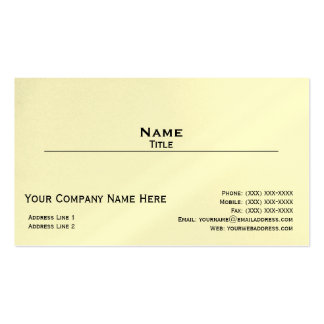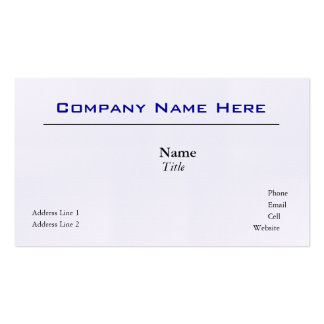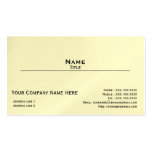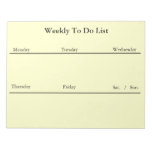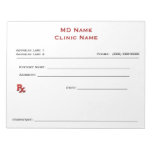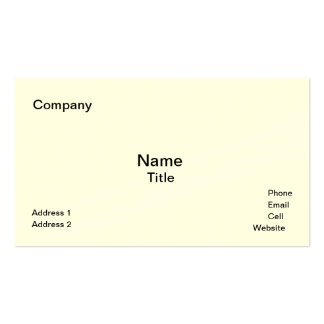A successful grand opening evokes excitement and curiosity. While grand openings can sometimes be on the first day that a location accepts customers, we recommend that grand openings are held within a couple weeks of the business opening its doors. Here are some great grand opening ideas to make sure you nail this important first step.
What are the Goals of the Grand Opening?
Creating Awareness, Buzz, Memorable Experiences, and Relationship Building
By promoting a “Grand Opening” event in your initial marketing push, your ads should be more effective than they would be without the mention of the grand opening. Essentially, a grand opening gives you a way of standing out from the barrage of ads that potential customers experience every day.
Let’s use the example of a nail salon. Which of the following sounds better to you?
“Come to the Grand Opening of Patricia’s Nail Salon! This Saturday we are having an amazing 30% off sale on all manicures.”
or
“Come to Patricia’s Nail Salon! This Saturday we are having an amazing 30% off sale on all manicures.”
The advertisement highlighting the grand opening makes the sale sound special and like a limited time opportunity. Even if they don’t come to the grand opening, the advertisement, which includes the grand opening, will create more awareness of the business.
This leads to an important related point: Grand openings should be advertised and promoted. Without marketing support, grand openings are doomed to fail. All the marketing material should clearly say when the grand opening is happening, the business name, what services or products are sold, and where the business is located.
The possibility that your service could be better than what’s already out there is what creates excitement. It’s important to communicate this in your marketing. “Try Us, We are Better Because…we have two hundred shades of nail polish from which to select.”
However, the grand opening should have something special that will want to make people visit your store or establishment that day, or feel that they are missing something special. While getting people to come is important, getting them to ask their friends if they went is equally as important.
Too small of a crowd and a grand opening can seem like a flop. A party with only a handful of people can create a depressing mood. You want to take measures to ensure that the grand opening appears to have a good crowd, even if you only get a few potential customers arriving. You should talk to friends and relatives, before hand, about coming to the event. Also, ask employees to help out and ask them to bring their friends to visit during the grand opening.
Too big of a crowd results in potential customers receiving poor service or being inconvenienced. To prevent a big crowd from being a problem, you should have plans for the following:
Another area where a business can falter during a grand opening is staffing. Will you be staffed properly for the event and will the staff be properly trained?
For your event, you might want to consider adding extra staff, including a greeter to welcome people to your business, and an extra manager to handle anything out of the ordinary, such as coordinating entertainment or handing out gift bags. As the owner, it is easy to get caught up in managing details of the event. But it’s more important for you to make a personal connection with your community and customers.
Doing a practice walk-thru of the event with your staff is a good idea. Responsibilities for the event might be different than normal and it gives you a chance to clearly define what each person should be doing.
Think about dedicating 20% of your store’s first year marketing budget towards the grand opening, with a minimum of $6,000.
Marketing Budget:75% of Grand Opening Budget
Radio
Newspaper
Local Broadcast TV
Direct Mail (eg postcards)
Other
Event Budget:
25% of Grand Opening Budget
Extra Staff (include security)
Entertainment
Food
Decoration
Giveaways
Extra Parking
The Store Starters and several other places, like Signs.com, recommend having a photographer and videographer at the event. This will add to the “big” celebration mood and give you material to post on Facebook and your store’s website.
GrandOpeningHelp recommends involving a local charity in your event. For example, Patricia’s Nail Salon, which markets to women, might help raise money and make a donation to a charity trying to eliminate breast cancer. Oversize checks always make great visuals for the press.
Creating Awareness, Buzz, Memorable Experiences, and Relationship Building
Goal 1: Create Awareness (What You Do and Where You Are Located)
The success of the grand opening should not be measured by just event attendance. A successful grand opening makes your potential customers aware of your business, even if they don’t attend the actual event.By promoting a “Grand Opening” event in your initial marketing push, your ads should be more effective than they would be without the mention of the grand opening. Essentially, a grand opening gives you a way of standing out from the barrage of ads that potential customers experience every day.
Let’s use the example of a nail salon. Which of the following sounds better to you?
“Come to the Grand Opening of Patricia’s Nail Salon! This Saturday we are having an amazing 30% off sale on all manicures.”
or
“Come to Patricia’s Nail Salon! This Saturday we are having an amazing 30% off sale on all manicures.”
The advertisement highlighting the grand opening makes the sale sound special and like a limited time opportunity. Even if they don’t come to the grand opening, the advertisement, which includes the grand opening, will create more awareness of the business.
This leads to an important related point: Grand openings should be advertised and promoted. Without marketing support, grand openings are doomed to fail. All the marketing material should clearly say when the grand opening is happening, the business name, what services or products are sold, and where the business is located.
Goal 2: Create Excitement
A grand opening needs to be exciting. Does your town really need another nail salon or pizza parlor? The town doesn’t need another nail salon, if the services, decor, or options are similar to what’s already available. However, we always want a higher quality nail salon or better tasting pizza pie.The possibility that your service could be better than what’s already out there is what creates excitement. It’s important to communicate this in your marketing. “Try Us, We are Better Because…we have two hundred shades of nail polish from which to select.”
However, the grand opening should have something special that will want to make people visit your store or establishment that day, or feel that they are missing something special. While getting people to come is important, getting them to ask their friends if they went is equally as important.
These grand opening ideas can create excitement:
- Giveaways: “Every client that comes in gets a gift basket including…”
- Demonstrations and Classes: “Our expert nail technician will show you how to…”
- Celebrities: “Our event will be hosted by the star of…”
- Food: For businesses that target adults, wine and cheese is always a big draw. (Be careful though, free alcohol can attract the wrong crowd.)
Goal 3: Create a Memorable Positive Experience
A grand opening is a chance to create a strong first impression. However, a poor grand opening can create a negative image of business. One area where it can easily go wrong is crowd management. It is important to have a realistic downside and upside estimate of a potential crowd.Too small of a crowd and a grand opening can seem like a flop. A party with only a handful of people can create a depressing mood. You want to take measures to ensure that the grand opening appears to have a good crowd, even if you only get a few potential customers arriving. You should talk to friends and relatives, before hand, about coming to the event. Also, ask employees to help out and ask them to bring their friends to visit during the grand opening.
Too big of a crowd results in potential customers receiving poor service or being inconvenienced. To prevent a big crowd from being a problem, you should have plans for the following:
- Alternative Parking: You can send people to park there if your main lot is full.
- Too Many People in Your Store: You can host part of the event outside or create space by removing displays.
- Running Out of Inventory, Food, Etc.
Let’s continue with the example of the nail salon.
The salon decides to offer a big discount and gift bag to everyone that gets a manicure during the grand opening. However, there are only four nail technicians and a big crowd of women waiting. Instead of having people wait, they could offer the discount to anyone that books an appointment for a future date and give them the gift bag.Another area where a business can falter during a grand opening is staffing. Will you be staffed properly for the event and will the staff be properly trained?
For your event, you might want to consider adding extra staff, including a greeter to welcome people to your business, and an extra manager to handle anything out of the ordinary, such as coordinating entertainment or handing out gift bags. As the owner, it is easy to get caught up in managing details of the event. But it’s more important for you to make a personal connection with your community and customers.
Doing a practice walk-thru of the event with your staff is a good idea. Responsibilities for the event might be different than normal and it gives you a chance to clearly define what each person should be doing.
Goal 4: Building Relationships
So far, we have discussed the event from the perspective of creating a great experience for customers. However, potential customers are not the only people that should be there. You may want to invite local press, community leaders, and local business people closely aligned with your venue.Who should you invite to the event for relationship building?
Local Business People
What businesses surround your location? If you are located in a strip mall, what are the other companies that have storefronts in the mall? You want to personally invite the other business owners and store managers to the event. If you’re successful in bringing more traffic to the area, everyone benefits. The reverse is also true. This is a great way to get the relationships off to a good start and ask them for help in promoting the grand opening.Strategic Business People
Who can refer your store business? In the example of the nail salon, I would think that people often get their hair or makeup done on the same day that they go to a nail salon. If these business people see that you are an exciting new business, they may be more willing to provide referrals.The Press
Of course you want your event to be covered in local news media.Local Politicians
Having a politician attend is only sometimes a good idea. For example, having a very formally dressed man come to a nail salon grand opening and give a speech might not create the right mood. However, if you have a female mayor or local city council member, an invitation would be a good idea.How Much Should You Spend on Marketing Your Grand Opening?
I haven’t found many good resources on how to set a budget for a grand opening. However, I have been a marketer for many years and the following guidelines are based on my general experience.Think about dedicating 20% of your store’s first year marketing budget towards the grand opening, with a minimum of $6,000.
Why 20%?
- Frequency and repetition will help your advertisements get noticed. You want to have a big enough budget that your target customers will be exposed to your ads multiple times in a short-period (two weeks) prior to the grand opening.
- Your dollars should go farther when marketing a grand opening because of the content of the ads. The “newness” of the business and special offers related to the grand opening should increase the responsiveness of potential customers.
Why only 20%?
- You don’t want to spend so much on your grand opening that it significantly reduces your ability to advertise during the rest of the year. There is also a very real chance that your advertisements might not be effective. Before you know what messaging and advertising mediums work, it is very risky to spend a big chunk of one’s annual advertising budget.
Why should $6,000 be the minimum committed to marketing the grand opening event?
- For $4,500, your business should be able to buy some advertising in two places. For example, ads in the local newspaper and one radio station. This is very close to the minimum amount that you will be able to spend on advertising to get some degree of frequency or exposure for your ads. This would leave $1,500 for expenses related to the event itself.
What should you do if you do if you don’t have $6,000 for a grand opening?
There are great low cost ways to promote a grand opening, which focus more on bringing in a crowd to the actual event than creating long-term community awareness of the business.Grand Opening Flyers ($50 to $150 in labor costs)
If your business is located near a destination with a high degree of pedestrian traffic, like the downtown areasof a city or a mall, you might want to consider having a couple people hand out flyers. If you go this route, you should keep in mind that people handing out flyers are going to be seen as representatives of your business. The person should be wearing a company “uniform” and look presentable. In the case of the nail salon, you might want to hire young women and give them a great manicure to show-off to potential customers.Sign Spinning ($180 to $220; $60 for the sign and $40 per hour for the spinner)
If your business is located near a major traffic area (pedestrian or car), you might want to employ a sign spinner. The risk of hiring a sign spinner is that their acrobatics are the center of attention and not the business. AArrow Sign Spinners has been providing businesses, large (like Ford) and small, with sign spinners for over a decade across the United States.Direct Mail Postcard Campaign ($735 for printing and sending 1,500 postcards, plus labor for addressing and stamping)
This approach is particularly useful if you expect your customers to come from a specific geographic area. You can use the phone book to find addresses or your local chamber of commerce might be able to help you get your hands on a good list. We recommend using 123Print for design and printing. Their account executives are very helpful and informative.Balloons, Banners, and Signs (under $100)
You can make your business look festive and attract attention. Where should you buy grand opening signs? Golden Openings has a nice selection of promotional items.Example of a Grand Opening Event Budget for Your Business
Total Grand Opening Budget:20% of Annual Marketing BudgetMarketing Budget:75% of Grand Opening Budget
Radio
Newspaper
Local Broadcast TV
Direct Mail (eg postcards)
Other
Event Budget:
25% of Grand Opening Budget
Extra Staff (include security)
Entertainment
Food
Decoration
Giveaways
Extra Parking
When should you have your grand opening?
Tap Into Existing Behavioral Patterns
When do people normally shop for your company’s product or service? What day of the week? Is it during the day or night? Changing the natural behavior of people is very difficult. If women like to have their nails done on Saturday and Sunday mornings, then the grand opening of Patricia’s Nail Salon should be during those times. If you don’t know the behavioral patterns, scope out a competitor and see when they are busy.Be Aware of the Broader World
Are there any big cultural events (sporting events, religious celebrations, or school holidays) that might impact people’s ability to come to a grand opening. Not only check the calendar but ask your neighbors about their plans on potential dates.Be Open for at Least Two Weeks
When you first open your doors for new business, there is bound to be some problems. Being open for a couple weeks will give a business some time to discover and fix issues before a big crowd arrives.The Day Of The Event
If you’re expecting a big crowd that might overflow onto the street, or if you plan to have a sign spinner, you should probably contact city hall or the police department to see if you are going to need any permits. You wouldn’t want your event to be shut-down just as the crowd is gathering.The Arrival
Who will be greeting visitors? What options or information should you be providing visitors when they arrive?The Visit
Do you expect everyone to arrive at once or sporadically? Will you be having a main event? If so, do you want to provide reasons for them to get to your store early or stay after the main event? If you are having lots of little events or activities, how are you going to let people know about themThe Departure
Are you giving visitors parting gifts (for example: free t-shirts, key chain, or a gift bag)? Are you going to try to get visitors to join your mailing list or become a Facebook fan before they leaveWhat You Should Do After Your Grand Opening
Send Thank You Emails
Send thank you notes to everyone that attended the event. In the thank you note, you might ask them to provide a review on Yelp or Google +.Publicize the Event
Post about the event on Facebook and other social media outlets. If you have pictures and videos post them.Work the Press
Hopefully, you got a reporter from your newspaper or popular local blogger to come. Make sure they have pictures to run for the article or post.Should Companies that Serve Other Businesses (B2B) have Grand Openings?
If it’s important that your customers know your physical address (for example: a print shop, where customers come in to place orders and make pick-ups), a grand opening is a good idea. However, the focus of a grand opening for a B2B business should be focused more on putting on a great networking event than a party. For example, getting the mayor and the president of the local chamber of commerce involved is a good idea. Often times, B2B grand openings have a ribbon cutting ceremony. Many chambers of commerce provide members with ribbons and scissors for these events at no cost.More Ideas for Marketing and Promoting Your Grand Opening
Visit TheStoreStarters: This website has dozens of article and ideas for grand openings, including using online advertising and social media.The Store Starters and several other places, like Signs.com, recommend having a photographer and videographer at the event. This will add to the “big” celebration mood and give you material to post on Facebook and your store’s website.
GrandOpeningHelp recommends involving a local charity in your event. For example, Patricia’s Nail Salon, which markets to women, might help raise money and make a donation to a charity trying to eliminate breast cancer. Oversize checks always make great visuals for the press.
